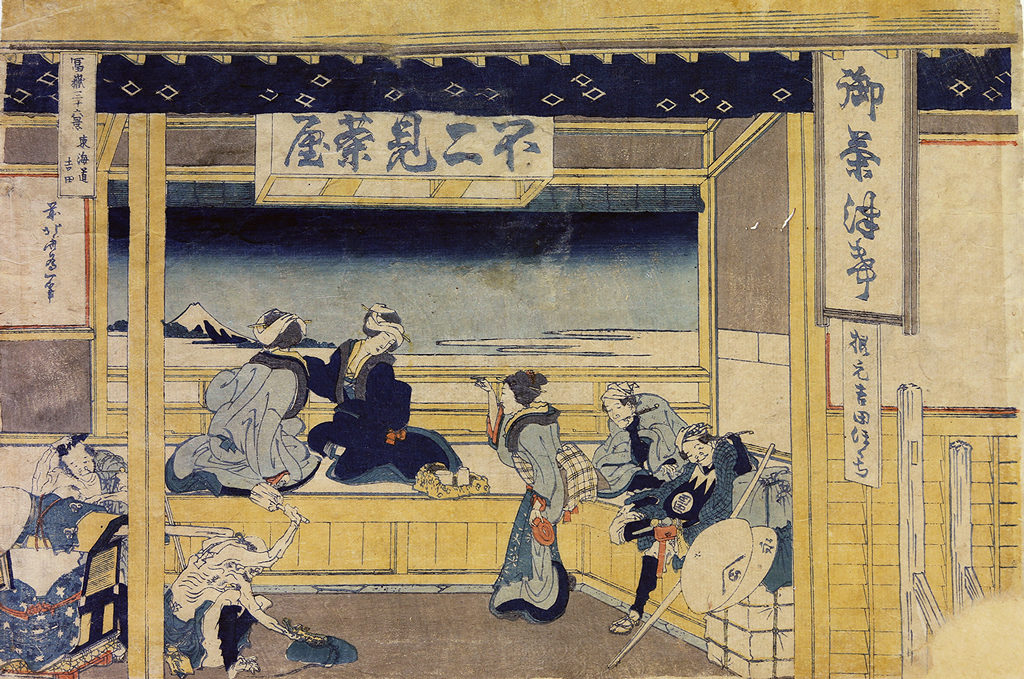
The Tokaido Road (東海道), or Eastern Sea Road, was one of five main thoroughfares connecting Edo to the rest of Japan.[1] It started in Edo at the Nihonbashi Bridge and followed along the southern coast of the island of Honshu before ending in Kyoto.[2] The journey, which took approximately 2 weeks, was known for its beautiful views and scenic vistas.[3] Travelers could find food and lodging at any one of the 53 stations spaced along the road.[4] Yoshida, known today as Toyohashi City, was the 35th station on the Tokaido Road.[5]
Yoshida on the Tôkaidô features a tea house that served and entertained travelers as they passed through the city. Traditionally built of wood and bamboo, tea houses used shoji (障子) for their doors and windows, as can be seen throughout this print. Shoji refers to a wooden frame comprised of thin strips of balsa wood covered with translucent Japanese paper to allow natural light to filter in.[6] Yoshida on the Tokaido illustrates an array of travelers accompanied by the geisha who would entertain them with music, dance, and conversation.[7] From within the tea house, the travelers have a scenic view of Mount Fuji (富士山).
Katsushika Hokusai was one of the most well-known ukiyo-e artists in Edo Japan. This print is part of his most popular series 36 Views of Mount Fuji, which features his most iconic work, Great Wave Off Kanagawa. Although the Tokaido Road no longer exists today, works such as this provide a sense of what it was like to travel along the road, taking in some of Japan’s most scenic landscapes.
-Mandy Prue, Class of 2016
Sources:
[1] “Ando Hiroshige The Tokaido Road”, The Woodblock Prints of Ando Hiroshige, hiroshige.org.[2] Id.
[3] “Tokaido, Historical Road, Japan”, Encyclopaedia Britannica, britannica.com.
[4] Id.
[5] “Ando Hiroshige Tokaido – Hoeido Edition”, The Woodblock Prints of Ando Hiroshige, hiroshige.org.
[6] “Tea House”, New World Encyclopedia, newworldencyclopedia.org.
[7] Id.
